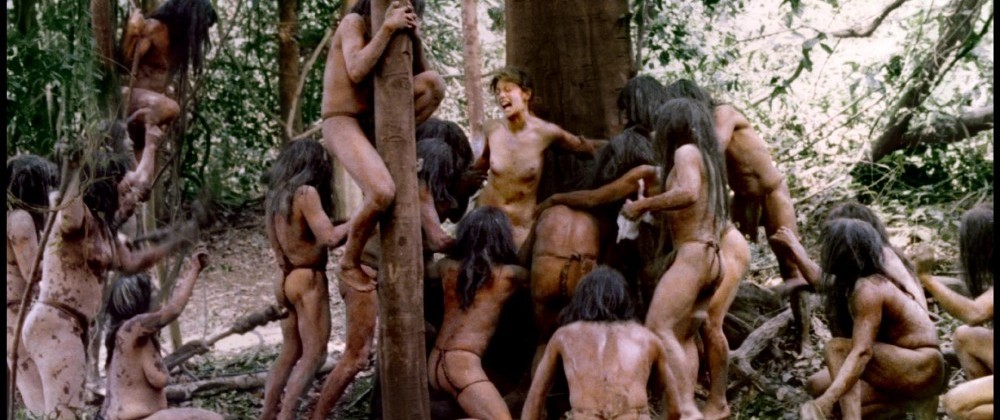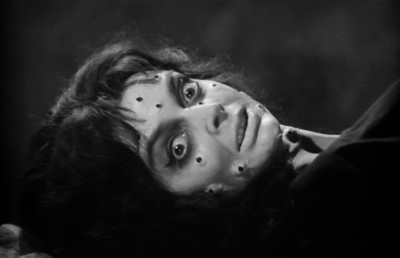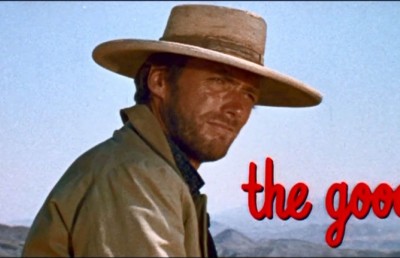A Genealogy of Italian Popular Cinema: the Filone

As opposed to the conventional term used to define North American popular cinema, genre, in the Italian landscape of popular cinema the correct term is ‘filone’. The difference between the two terms reflects largely the industry practice differences. Producers made their products differently during the heyday of popular cinema in Italy (1950s to 1970s) and as a theoretical term filone is an expression of those differences. Before I delve directly into the differences I should mention that there are two conceptions of the terms genre and filone: as a critical term and as an industry term. As a critical term a genre is defined with the benefit of hindsight, whereas an industry (i.e. a studio) uses the term as an expression of current marketing strategies. For example, in most overviews of the horror genre an author will identify German Expressionist films such as Cabinet of Dr. Caligari and Nosferatu as “horror” films. However, the term was only used for the first time ever in reference to film by Universal studios in 1930 to market their Gothic films Dracula (1930) and Frankenstein. Hence from an industry standpoint, “horror” cinema did not exist before 1930. So no one, critic or producer, would have referred to, say the silent The Phantom of the Opera, as a horror at the time of its release. But from a critical genre standpoint, The Phantom of the Opera has been referred to as a horror film for decades since. Another case study example that identifies a split between industry and critical conception of genre, is writer Steve Neale’s essay “Melo Talk: On the Meaning and Use of the Term Melodrama in the American Trade Press.” In this well researched essay that looks at the way American studios marketed films during the classical period (1938-1960), Neale refutes the critical and theoretical understanding of the term ‘melodrama’ as belonging to “feminine genres” (women’s pictures, weepies, etc.). On the contrary, in the one thousand citations of the term he came across in trade presses (Variety, the Film Daily, the Hollywood Reporter, etc.) the term almost exclusively refers to anything but feminine genres: “The mark of these films is not pathos, romance, and domesticity but action, adventure, and thrills; not ‘feminine’ genres and the woman’s film but war films, adventure films, horror films, and thrillers, genres traditionally thought of as, if anything, ‘male’” (Neale, p. 69). Hence there is a discernible difference in the type of film that will enter into discussion depending on who is doing the defining, industry player or critic/academic. 1
Filone
The word filone has many meanings in Italian, which expresses the multifarious forms it can take in cinema. Depending on the context (geological, literary, quotidian) it can refer to a loaf of bread, a thread or cord, or the principle vein in a mineral, or to express when something is “in the tradition of”. In his invaluable study on the giallo La Dolce Morte –one of the few English accounts of the filone as a theoretical term– Mikel J. Koven covers these varied meanings (and their sometimes English usage) and settles on the one he feels best expresses the Italian popular film: its geographical meaning as “the main current in a river” (Koven, p. 4). Koven cites (quoted in Maitland McDonagh, 1994, p. 95) Paul Hoffmann from the New York Times as defining the filone as a streamlet, “as in a small stream off a main river”. “ Putting these together, if we think of a larger generic pattern as a river, in this context the giallo as genre, several smaller “streamlets” branch off from that genre-river, occasionally reconnecting to the main flow farther “downstream.” As Koven suggests, perhaps, in some cases, what we think of as a film genre, like the giallo, may be a cluster of concurrent streamlets, veins, or traditions –filone” (pp. 5-6).
Therefore one could see the giallo as a “streamlet” –a filone– of the larger crime or horror genres (Koven, p. 6). “On the other hand, from a more conservative literary perspective, if we see the giallo as referring to the entire crime genre of literature (which it does, at least in the original language), then it should be possible to identify smaller variations on that genre–the various filone that make up that genre, at least in popular cinema. Or…we can see filone ….more as a tradition of film narrative than as a genre” (p. 6). Ultimately, Koven (and I agree) prefers to think of the giallo in terms of its own various filone (strands), rather than as a subgenre of a larger filone: “Seeing the generic diversity of the giallo in terms of its various filone strikes me as more productive than the subordinated term “subgenre” (p. 6). The latter is a better way to account for the fullness/richness of the giallo and the ever-changing Italian film industry, always ready to veer production off into a current popular cycle.
From this perspective, the filone is more flexible than genre or subgenre, taking in the idea of cycles, trends, currents, and traditions. In his study Koven discusses how, depending on current interests, trends and cycles, particular giallo films could be seen intersecting with other neighboring areas: horror, the pure crime film –the poliziotto–, soft core, and exploitation cinema. And then within horror it can be more specific, like the filone of the supernatural or gothic, but these are rare, the ‘giallo-fantastico’ (coined by Kim Newman, as quoted in Koven, p. 9). The effect is that certain filone of the giallo will have a different stylistic and narrative emphasis. For example, a giallo film intersecting with the crime film would have a narrative that features more of the police procedural element than a giallo. The ‘pure’ giallo will have the victim or witness themselves performing as the main “amateur” investigator. While the crime-giallo filone will feature actual police detectives. And in fact, as the giallo cycle waned it was replaced in popularity by the (crime) poliziotto filone. In another strain, certain gialli merged with the sex film (giallo-sexploitation): Strip Nude for Your Killer (Andrea Bianchi, 1975), Delirium (Renato Polselli, 1972), Giallo a Venezia??/ ??Mystery in Venice (Mario Landi, 1979), Emanuelle’s Revenge (Joe D’Amato, 1975).
A similar trending can be seen in the spaghetti western, where the intersecting streamlets were with the political cinema (political spaghetti westerns such as Kill and Pray (Requiescant), 1967, Carlo Lizzani, Quien Sabe? (A Bullet for the General), 1966, Damiano Damiani, Companeros/Il Mercenario/A Professional Gun, 1970, Sergio Corbucci); the gothic/horror (Django, 1966, Sergio Corbucci, Django the Bastard, 1969, Sergio Garrone, The Great Silence, 1968, Sergio Corbucci, Django Kills, 1967, Giulio Questi, Sartana, 1968, Gianfranco Parolini); comedy (My Name is Nobody, 1973, Tonino Valerii, They Call Me Trinity (1970, Enzo Barboni) and Trinity is Still My Name, 1971, Enzo Barboni, and many other Terence Hill and Bud Spencer films; and finally, even the fumetti-neri, Tex and the Lord of the West, 1985, Duccio Tesssari.
We can summarise three central ideas of the filone:
- It can be understood as a broader and more variable, flexible idea than genre
- It can be understood as a tradition or formula of film narrative, rather than genre
- Or in a double sense: it can be understood as a filone of a larger genre (like crime or horror), or simply as a filone with its own ‘strands’.
What are the benefits of filone over genre? Since filone is less distinct than genre it allows for greater variance and nuance and therefore allows for a better account of the particulars of the Italian film industry and its local factors, which are:
- What Dimitris Eleftheriotis calls the “transcultural and transnational understanding of national cinema” (p. 14) 2
- The ‘terza visione’ audience exhibition culture in Italy. 3
- And more generally, a volatile film industry, where films were put together quickly to take advantage of a change in popular trend.
In this regard, Italian film producers of popular cinema in the 1960s and 1970s were a fickle bunch tied to the vagaries of public taste and international trends (especially American cinema). As a funny expression of this, director Loris Cozzi once said that when you bring a script to a producer they don’t ask, “what is your film like,” but “what film is your film like?” So that a filone that was popular at one moment would quickly give way to the next trend that was deemed more popular, or demonstrate an inflection from that currently popular trend or cycle. For example, the notoriety of Wes Craven’s Last House on the Left (1972) sparked a mini-filone of ‘hostage’ films that fused the violence of the giallo with the sexual depravity of the sexploitation/Nazi film: Night Train Murders (1975, Aldo Lado), House on the Edge of the Park (1980, Ruggero Deodato), and many years later, revived in The Last House in the Woods (Il Bosco Fuori, Gabriele Albanesi, 2006).
Historical Context
There are (at least) three inter-related factors that shape the differences between filone and genre, which I will address below:
- Industry susceptibility to change and trends
- The short-term nature of popular trends
- Producers and filmmakers having to be reactive rather than active
The fallout effects of World War 2 and the Marshall Plan had an indirect affect on the way in which American studios marketed their films abroad. At some point in the 1950s American studios realized it would be more cost effective if they set up shop in Italy and make films there, rather than making big-budget films in the US and then exporting them. The genre that most benefited from the resources and skills of the Italian industry was the historical epic. Italians had been making these sort of films since the silent era (Cabiria 1913, The Last Days of Pompeii, 1908, 1912, Spartacus, 1912, Maciste, 1913) and revisited these glory epics of the teens with the first major breakthrough filone of the post-war period, the peplum (or pepla for plural, which peaked between 1957-1964.), or as it may be called in North America, the sword and sandal film. Inspired by this success and the skills and resources to make them, the Americans made a series of big-budget peplum which employed Italian crews and craftsmen: Helen of Troy (R. Wise, 1956)¸ Esther and the King (1960), Ben Hur (W. Wyler, 1959), Cleopatra (1963, Joseph L. Mankiewicz), The Last Days of Pompei (1959, Mario Bonnard), The Nun’s Story (Fred Zinnemann). Spurred by the success of the peplum, even Sergio Leone, who worked as a second unit director on Ben-Hur and Helen of Troy, made his debut with a peplum, The Colossus of Rhodes (1960, S. Leone). As an interesting side note, Martin Scorsese revisited this strategy by making Gangs of New York (2002) entirely inside Roma’s Cinecitta Studios, using a largely all-Italian crew.
Dimitri Eleftheriotis carefully outlines how the Italian film industry after the war countered and responded to the presence of American studios. After the strong, forceful presence of US film industry in Italy postwar, the Italian industry fought back by initiating measures to block American film earnings, protectionist measures, which encouraged local production. One of the ways the US countered this was to invest in Italian productions and distribution of their films. They responded with a mixed strategy of co-financing Italian films, buying some Italian films for the US market, and making their own films in Italy (pp. 103-104). The aforementioned peplum was an example of how the US became involved directly in Italy, making their own big epics in Italy with American stars, money, and director, but Italian studios and crews, and making altered versions for the US market. For the Italian film industry, the experience of working with the US on these major films sparked the possibility of venturing into co-productions with other neighboring European nations, helping to reduce initial production costs while ensuring reciprocal distribution (at least in the co-production country). As Elefthiotis notes, by the late 1960s Italy had become the 2nd largest exporter of feature films after the US, producing more films than any other European nation, and often outnumbering even the US. Films were distributed across Europe/America (the bigger films) and South America, Africa, the Middle East (for the smaller films) Why this upsurge in production? Because by consistently co-producing films with Germany, France, Spain and America, Italy had become the hub of International co-productions. According to Eleftheriotis about half of the Italian films made during the peak period of 1964-1968 were co-produced (pp. 105-106). This was largely aided by the Legge Corona of 1965, which improved conditions for producers making coproductions: “an Italian partner in a film could recover a lot of any losses that might result from poor box-office takings through state subsidies and tax rebates. The year 1965 also saw the start of support for ‘national’ productions in Spain, and 1968 for those in Germany.” 4
After the peplum came a plethora of equally successful (domestically and internationally) filoni which still resonate with contemporary American audiences, aided immensely by the appearance of many on DVD and now bluray. A chronological listing of popular filoni with their peak years will give you an inkling of just how fluid and impermanent Post-WW2 Italian popular cinema was:
- Musicarelli (1956-1969, song-and-dance flicks starring Italian pop singers which were very popular in late ‘50s and ‘60s) [domestic only]
- Peplum (1957-1964)
- Commedia all’italiana (1958-1980)
- Mondo (1962-1966)
- Giallo (1962-1982) 5
- Fumetti Neri Films (1965-1975)
- Spy/Espionage (1960s)
- Spaghetti Westerns (1964-1978)
- Gothic Horror (1957-1977)
- Poliziottesco (1968-1978)
- Science-Fiction (1980s)
- Action/Apocalypse (1980s)
And under the more general rubric of exploitation films that were made during this period, you would add:
- Sexploitation: soft porn/sex comedies
- Nunsploitation film
- Nazi/SS Film
- Decameron Films
A great many of these filoni grew in and out of each other. For example, as noted above, the giallo eventually gave way to the crime film. With Italy being ripped apart by political in-fighting among rival terrorist groups in the 1970s (the famous “Years of Lead”/”Anni di piombo”), the spaghetti western gave way to its urban variation, the crime film. The mondo filone (Ecco, Mondo Cane, Africo Addio) which grew out of the documentary (and arguably, neo-realism) gave way to purely fictional films cloaked in a docu-drama/third world format, most of them dealing with cannibalism (Umberto Lenzi’s Man From Deep River, 1972, Deep River Cannibals, 1972, Umberto Lenzi, Cannibal Holocaust, 1980, Ruggero Deodato, Make them Die Slowly/Cannibal Ferox, 1981 Umberto Lenzi). Then, the huge success of the George Romero’s Dawn of the Dead in 1978 (which was co-produced by Italian Claudio Argento) coupled with the mondo/third world cannibal filoni spawned a whole new horror filone, the zombie film. What do the cannibal and zombie filoni have in common? Eating people, so producers combined them in a string of films where people had to contend with BOTH real cannibals and zombies. So for a time, from roughly 1979 to 1981, these two filoni overlapped—with both the ‘real’ cannibals of Ruggero Deodato’s Cannibal Holocaust and Umberto Lenzi’s Cannibal Ferox competing with the supernatural zombies found in films like Lucio Fulci’s City of the Living Dead and The Beyond for box office dollars. Some of these overlap ‘cannibal + zombie’ films were Zombie Holocaust (aka Dr. Butcher, MD, Marino Girolami) and Night of the Zombies/Hell of the Living Dead, Bruno Mattei.
The effect this industry changeability had on filmmakers is that it required directors to be jack of all trades, switching hats from one type of film to another in regular order. Lucio Fulci, known to most North Americas for his intense zombie and supernatural horror films of the 1980s, started off as a master of comedy during the heyday of ‘commedia all’italiana’. In between these periods (1960s and 1980s) Fulci ‘survived’ by working in all kinds of filoni: historical film (Beatrice Cenci, 1969), giallo-sex film (Perversion Story), the pure giallo (Lizard in a Woman’s Skin/Una Lucertola con la pelle di donna, 1971, Don’t Torture a Duckling/Non si sevizia un paperino), and spaghetti westerns (Four of the Apocalypse/I quatro dell’apocalisse). When Flashdance became a huge surprise hit in 1983 Fulci took the bait by making a giallo set in a disco dance school (with lots of dancing!), Murder Rock: Dance Death/Murderock-uccide a passo di danza, 1984). The great Mario Bava managed at least one film in almost every conceivable filoni, sometimes combining one or more: peplum-horror (Hercules in the Haunted World), gothic-horror-science-fiction (Planet of the Vampires/Terrore nello spazio, 1965), peplum (Erik the Conqueror/Gli invasori, 1961, Knives of the Avengers/I Coltelli del venndicatore, 1966), giallo (The Girl Who Knew Too Much/La Ragazza che sapeva troppo, 1962, Blood and Black Lace/Sei donne per l’assassino, 1966), gothic horror (Black Sunday/La maschera del demonio, 1960, Black Sabbath/Tre volti della paura, 1963), sex comedy (Four Times That Night/Quante volte…quella notte, 1972), spaghetti western (Roy Colt and Winchester Jack, 1970, La Strada per Fort Alamo, 1964), spy-espionage/comedy (Le spie vengano dal semifreddo/Dr. Goldfoot & the Girl Bombs, 1966), fumetti neri (Diabolik, 1968), and crime film (Rabid Dogs/Cani Arrabbiati, 1974). The same eclectic filmography can be listed for film composer extraordinaire Ennio Morricone, whose immense talents blessed all type of filoni: spaghetti western, giallo, horror, crime, and sexploitation.
Conclusion
The landscape of popular cinema for contemporary Italian directors has scaled down considerably, with only a few of the classic filoni still active, namely horror (always a mainstay), giallo (with the odd film), and the filone that has made the strongest comeback, the crime/poliziottesco. This revival is no doubt a result of a revived interest in Italy’s recent violent political history (the noted “Anni di piombo”/”Years of Lead” period, roughly the late 1960s to early 1980s). Some of these recent Italian crime films include: The Escort/ La Scorta, Ricky Tognazzi, 1993, Una Bianca, 2001 and Arrivederci amore, ciao, 2006, Michele Soavi, Romanzo criminale, 2006, Michele Placido, Il grande sogno/The Big Dream, 2009, Gomorrah, 2008, Matteo Garrone, and Vallanzasca – Gli angeli del male/Angel of Evil (2010, Michele Placido). A noted difference is that some of the recent crime films have merged the social politics and urban violence of the classic poliziottesco with the melodrama of interpersonal family dynamics (One Hundred Steps/I Cento passi, 2000, Marco Tullio Giordana), The Best of Youth/La meglio gioventù, 2003, Marco Tullio Giordana, Mio fratello é figlio unico/My Brother is an Only Child, 2007, Daniele Luchetti).
A wonderful, largely intentional homage and swan song to the heyday of popular Italian filone is Michele Soavi’s Dellamorte Dellamore (1994). Based on the hugely popular Italian fumetti neri Dylan Dog, Dellamorte Dellamore is a catalogue of the Italian filoni of the 1960-1970s, referencing the fumetti neri, the gothic filone, the zombie filone, the sexploitation filone and the comedy filone, grounded in a uniquely stylish, existentialist parable of contemporary Italian society (as director Michele Soavi said about Dellamorte Dellamore, “It is not about the fear of dying; its concern is the fear of living…. It is a very Italian thing, as there are many allusions to our government.” 6 “The second part of the quote, supported by the film’s use of nearly every imaginable authority figure –mayor, bureaucrat, policeman, doctor, nun- gives credence to a reading of the film’s cemetery as a microcosm for social decay in the outside world and one person’s inability to adjust to it.” 7
Contemporary fans of Italian popular genre (filone) cinema will have to content themselves with the huge back-catalogue of Italian filone of the late 1950s to the 1980s because it is highly unlikely that the varied factors that enabled Italy to be the hub of international co-productions from the 1950s to 1970s will ever be duplicated –the Legge Corona of 1965 which increased subsidies in coproductions; the presence of major US film companies; the huge popularity of western television shows in the post 1950s period in the US which created a void in the US production of big screen westerns, which Italian producers gladly filled; along with the much slower dissemination of television in Italy, especially the South, which meant that Italians still went to the cinema theatres in great numbers; 8 the city of Rome as an attraction for international filmmakers and actors; and the great reputation of Cinecitta as a huge studio with gifted technicians. Luckily, especially for the uninitiated, we have several thousand great (and not so great) filoni films to discover and rediscover; and from an historical standpoint Italy must be certainly acknowledged, along with the United States, as one of the great National producers of popular cinemas of the post-world war 2 era (1950s to late 1970s). 9
Bibliography
Blumenstock, Peter. “Michele Soavi: Gravely Speaking,” Fangoria #149, January 1996, pp. 52-55, 77.
Dyer, Richard & Ginette Vincendeau. Popular European Cinema. Eds. Richard Dyer & Ginette Vincendeau. London, New York: Routledge, 1992.
Eleftheriotis, Dimitris. “Genre Criticism and the Spaghetti Western.” Popular cinemas of Europe : studies of texts, contexts, and frameworks. New York : Continuum, 2001.
Koven, Mikel J. La Dolce Morte: Vernacular Cinema and the Italian Giallo Film. Lanham, Maryland: The Scarecrow Press, 2006.
McDonagh, Maitland. Broken Mirrors/Broken Minds: The Dark Dreams of Dario Argento. New York: Citadel Press, 1994.
Neale, Steve. “Melo Talk: On the Meaning and Use of the Term Melodrama in the American Trade Press.” Velvet Light Trap. Number 32, Fall 1993: 66-89.
Slater, Jason. Ed. Eaten Alive!: Italian Cannibal and Zombie Movies. Plexus Publishing Ltd, 2002.
Notes
- For a detailed discussion of this distinction I refer the reader to the following Tom Gunning essay: “Those Drawn with a Very Fine Camel’s Hair Brush: The Origins of Film Genres,” in Iris n. 20 (Autumn 1995): 49-61. ↩
- In his study of the spaghetti western Dimitris Eleftheriotis borrows the term “transculturation” from the book Imperial Eyes: Travel Writing and Transculturation by Mary Louise Pratt. The term reflects the cultural exchanges between two or more cultures, in this case Italy and the US, where there is give and take between the cultures, in an attempt of a cultural self-awareness. The process is complex because it always “takes place in a field of complex and unequal power relations, which transform to a degree both parties involved in the process” (p. 53). Karola refers to it as “intercultural” in Karola, “Italian Cinema Goes to the Drive-In: The Intercultural Horrors of Mario Bava,” Horror at the Drive-In, ed. Gary D. Rhodes, (Jefferson, North Carolina, and London: McFarland & Company, Inc., Publishers, 2003), pp. 211-237. ↩
- For an in-depth explanation of “terza visione” I refer the reader to my essay “The Sister of Ursula & the Terza Visione.” ↩
- Christopher Wagstaff. “A forkful of westerns: industry, audiences and the Italian western.” Popular European Cinema. Eds. Richard Dyer & Ginette Vincendeau. London, New York: Routledge, 1992, 250. ↩
- The dates of the giallo are, like all of these ‘start/stop’ dates, somewhat open-ended and debatable. For example, whether one dates the beginning of the giallo at 1962 or 1964 depends on whether you feel Bava’s La ragazza che sapeva troppo (1962) is either or prototype of the giallo, or the real thing. If the former, then the start date would by 1964, with Bava’s seminal Sei donne per l’assassino. ↩
- Peter Blumenstock, “Michele Soavi: Gravely Speaking,” Fangoria #149, January 1996, p. 54 ↩
- Donato Totaro, Dellamorte, Dellamore in Eaten Alive!: Italian Cannibal and Zombie Movies, ed. Jason Slater, 231. ↩
- Christopher Wagstaff. “A forkful of westerns: industry, audiences and the Italian western.” Popular European Cinema. Eds. Richard Dyer & Ginette Vincendeau. London, New York: Routledge, 1992, 249. ↩
- Since the 1980s you would have to include such Nations as India, Hong Kong, Japan, and the Republic of Korea as leaders in the field of popular genre cinema with a large international market share (especially the latter two). ↩














